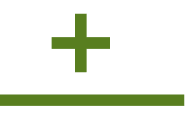Pilot plants are smaller-sized plants used to test and research new designs, technologies, and processes with the goal of “scaling-up” successful results to the full processing plant. Their design and fabrication follow the same engineering principles as commercial-size plants with similar components and systems and must adhere to the same local codes and regulations.
This article will explore pilot plant design steps in greater detail and why they should have flexible designs that facilitate a project's primary research and data collection objectives. We will also explore why modular construction could be the right approach for pilot plant development.
Pilot Plant Design: Best Practices
Commercial plants facilitate business objectives; they produce large volumes of products, perform complex processes, and ultimately meet economic goals.
Pilot plants, alternatively, are designed on a small scale to facilitate research of new technologies and processes. Because of these objectives, pilot plant design must be flexible and enable engineers to modify, reconfigure, and test varying configurations and operating conditions.
Rather than meeting productivity and efficiency goals, they must enable engineers to determine whether new technologies and processes are functional, achieve specific requirements, and warrant further investment.
Pilot Plant Design Steps
Several pilot plant development steps are similar to commercial plant development. However, each stage will have unique challenges and requirements due to project objectives. These steps have been listed below for further consideration.
Modular Pilot Plant Construction
Modular construction can offer several potential advantages for pilot plant development in certain applications. It can reduce costs and accelerate project completion timelines. Further, safety and quality levels can be improved since fabrication and construction occur in a controlled environment, such as a fabrication shop that adheres to strict codes and regulations.
However, a thorough assessment of modular construction drivers is essential to determine whether the modular approach suits a capital project. Modular construction is particularly advantageous in scenarios where on-site construction poses logistical challenges in accommodating construction crews, increases risk, requires enhanced control over costs and working conditions, or demands strict adherence to tight project deadlines. Consulting with an experienced EPC contractor can help ensure you make an informed decision.
Partner With H+M Modular—Pilot Plant Design
H+M builds pilot plants with conventional “on-site build” as well as modular. Whether your project requires an innovative design solution or a traditional construction approach, partnering with H+M Modular can ensure a successful project that meets your objectives and is completed on time and within budget.
H+M Industrial EPC and H+M’s modular group specializes in designing and fabricating truckable modules, providing exceptional capital project execution from concept to start-up for clients across the United States. From our engineering and fabrication headquarters in Houston, Texas, we can transport your project to wherever you are. For over three decades, we have provided end-to-end solutions for a wide range of project sizes within the energy, chemical, and terminals and logistics industries.
We are dedicated to providing trust, experience, and efficiency through all stages of engineering, procurement, and construction through our proven strategic EPC approach. Our comprehensive services, including front-end planning, detail engineering and design, procurement, fabrication, and construction allow us to take your modular process plant project from conception to completion, tailoring engineering and design solutions to meet your unique needs.

The H+M Industrial Team
For over three decades, we have provided best-in-class capital project management services to Energy and Chemical industries through our proven EPC approach. We are dedicated to providing trust, experience, and efficiency through all stages of engineering, procurement, and construction--on budget and on time.

Partnering with H+M Modular
H+M Modular, a division of H+M Industrial EPC, specializes in custom fabricated equipment, modules, and skids for energy and chemical industries. The approach emphasizes the potential for decreased risk through more controlled fabrication, leading to enhanced quality and safety, reduced labor costs and construction times, improved labor availability, and solutions to geographic challenges. We are dedicated to providing trust, experience, and efficiency through all stages of traditional and modular construction projects using our proven EPFC approach, If you're considering modular fabrication, we invite you to connect with us to learn about how modular solutions can improve project outcomes.





